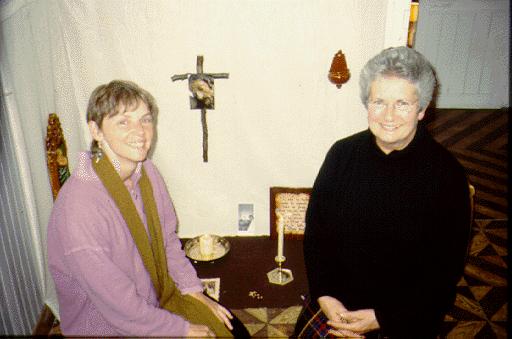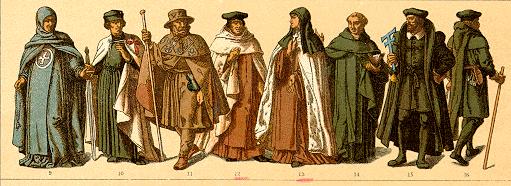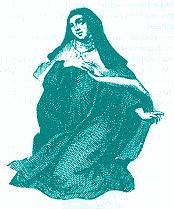 Cheryl and Gerd
Cheryl and Gerd

"Life, if you know what to make of it, is long enough." - Seneca, the Córdoban
 Chapter Eleven: A Spiritual Search
Chapter Eleven: A Spiritual SearchCheryl and Gerd
Gerd opened the door and preceded us into the small vestibule. She invited us through a narrow hall to her low-ceilinged, small bedroom, which resembles a nun's cell in its plainness. She offered us food and drink though she allowed she hadn't much. We were full from José's offerings and still hoped for dinner in a café, so our refusal was sincere. We saw her neat kitchen, pantry, bath, and her tiny study.
Here was her desk, photos of family, phone, and books, largely writings of St. Teresa, ranged on the shelf. Her altar is also here, created from a piece of handspun and woven frieze the nuns at the nearby convent of La Encarnación gave her, the kind of which their habits are made in the primitive tradition. In the midst of her darkest political troubles with them, Teresa referred to the unreformed Carmelites as "those who wear fine cloth."
Edad Moderna - Trajes de las Órdenes Monásticas y de Caballería Católicas - 12 y 13 - Carmelitas
Gerd told us a monk used to live in this house. When he went away to a convent, he said to her, "Gerd, you could live here." She said to him, "'I couldn't live in a horrible place like this' - you should have seen it! But I cleaned and painted it and here I am." She looked at us with her bright, clear blue eyes and smiled a joyful smile. She offered to show us how she prays at her home made altar, and lit two or three candles for us. Her holy space, made special by the brown frieze, covers part of the floor and climbs the wall. She has pinned postcard pictures of St. Teresa, and at the upper margin, at chest height, her own watercolor of yellow light streaming and a blue dove, the first evidence I saw that this woman is an artist.
When practicing her devotions, Gerd kneels to pray supported zendo style by a cushion she has made of the frieze - "The nuns don't use anything like this when they kneel" - on a matching mat she has embroidered at the corners with the names of JesuCristo, San José, with whom she says she now converses, Maria la Virgen and Santa Teresa. Like the nuns, however, she doesn't heat her place in winter. She lives here as best she can, "as a Carmelite in my heart."
"Life, if you know what to make of it, is long enough." - Seneca, the Córdoban
Gerd says she realized St. Teresa has protected and guided her since childhood. She has a memory of that connection from her sad childhood - the illustrated autobiography she has created shows a tiny, tearful, child. In Denmark, Gerd was married for more than twenty years, to a doctor. She had her own career and was prominent in her professional field. She also has three daughters, and now, six grandchildren.
They don't understand why she left, and were angry at her, though the anger has abated somewhat over time. Since their divorce, her husband has come to understand what she did was "for the best" and thanked her for having the courage to end their marriage. The Spaniards don't understand Gerd, she says. Her life represents an inversion of the values of their society : a woman who has abandoned husband, children, country, even religion. Raised a Lutheran, she converted to Catholicism. "It's a difficult life," she says, smiling.
When Gerd first left home, following an irresistible longing for God, she jettisoned all her belongings and started off on a tour of northern Europe on a bicycle. Her autobiography, written in Spanish, is titled "Buscando de Dios en Bici" (searching for God on a bicycle). She encountered and stayed for a while in a Christian community whose members shared her desire for retirement from the distractions of the world, living together in friendship, without sex. She realized, however, that she needed to go even further. Next, she found herself a hermitage near a lake in the Danish countryside. She painted it and moved in for many months, to live a life of comparative austerity and solitude.
It was during this time, she says, she understood that St. Teresa wanted her to come to Avila. Finally, she acquiesced. She got rid of the last of her possessions, bicycle included, and most of her money. She took the train to Avila in order to contemplate, during the slow journey, the enormity of the step she was taking and prepare herself.